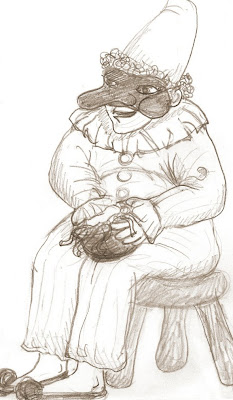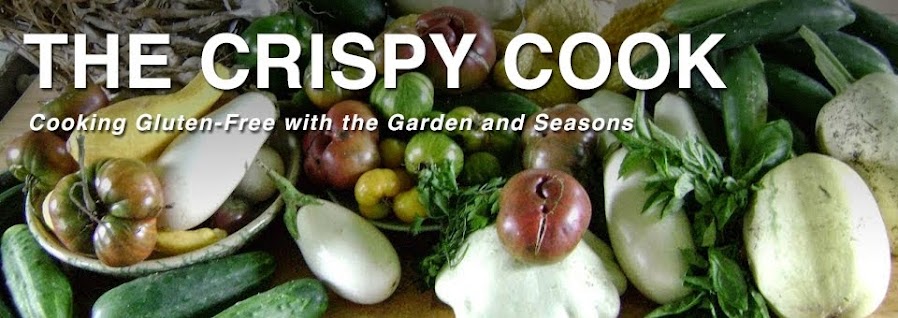
Reading Professor Gentilcore's lively prose was a treat. I have enjoyed absorbing details of history through other food-centric volumes (Mark Kurlansky's "Cod" and Salt" are particularly good reads) and Pomodoro! was an entertaining romp through many centuries of Italian history. The tomato is not native to Europe, but was imported from the New World in the mid-16th century as a botanical curiosity for aristocratic gardeners. It was considered a plant that would dampen one's bodily humors and was not incorporated into everyday Italian cooking until the 1800s, when peasant women began sun drying tomatoes and tomato paste to supplement their farm incomes.
The struggles among Italy's various principalities and regions leading up to unification of Italy in the 1860s saw a general shift in prosperity from South to North. The proud Kingdom of Naples was reduced to a provincial capital and Neapolitans were mocked as bumbling, pasta-munchers in nationalist newspapers. Being poorer meant that Southern Italians ate less meat and more vegetables, and tomatoes soon zoomed to the top of the food pyramid.
Gentilcore's book has other interesting chapters about how the development of tomato varieties swung back and forth between Italy and the U.S. and how the waves of Italian immigration to America developed new tastes back home for tomato-heavy recipes. The chapter "The Autarchical Tomato", about how Mussolini's government used the tomato and home cooking iconography in its Fascist propaganda is similarly eye-opening, and overall the book is a great combination of scholarly detail and engaging writing that chronicles how the tomato slowly became an integral part of Italian culture.

Having some Neapolitan ancestors, the short description in the book about the commedia dell'arte stock character of Pulcinella, who represents Naples with his ever-present pot of macaroni, intrigued me to learn more. Commedia dell'arte is a stylized form of comic street theater which features masked actors and which flourished in Europe during the 16th and 17th centuries. Many characters originally developed to represent different regions, and Pulcinella, with his long-nosed black mask, oversized floppy clothes and sugarloaf hat, became a Neapolitan trickster type, who, when he wasn't loafing around gorging on macaroni, carried a cudgel to beat people with. If you've even seen a Punch and Judy show you'll see how Pulcinella evolved into the long-nosed evil assaulter, Punch, in English puppetry traditions. There is a Pulcinella Museum in Acerra, which would definitely be high on my itinerary if I get to visit Italy someday. In the meantime, I sketched a merrier version of the pasta-loving Pucinella to be my tomato muse in the kitchen.

And now to turn to the glories of the pomodoros, or golden apples, the tomatoes of summer! Ah, the beauty of a bowl of fresh garden tomatoes. It is the season when our family indulges in simple tomato sandwiches, tomato and cucumber salads, tomatoes tucked into pretty much every supper dish and our kitchen counters are filled with colanders and bowls of tomatoes awaiting canning and freezing.
I always grow at least 10-12 plum tomato plants in our home garden. They are meaty and fabulous for preserving, either as sauce or slow-roasted in the oven with salt, pepper and olive oil and then packed into freezer packs with fresh basil leaves. The other tomato varieties we like for immediate eating include whatever red and yellow varieties are offered as seedlings from the farmer around the corner and this year that included Striped German, a yellow and red heirloom variety with heavy fruit and some Supersteak and Celebrity tomatoes. And of course tomatoes need basil and garlic for neighbors, so I think my garden is fairly Italianate these days.
Since I already had put up some canned tomato sauce and spicy salsa this summer I thought I would attempt canning some tomato barbecue sauce. In honor of my saucy, spicy new friend Pulcinella, who also endears himself to me with his high-pitched voice and tendency to hop around like a chicken (pulcinella means little chick in Italian), I present this sweet and tangy tomato barbecue recipe:

Pulcinella's Barbecue Sauce
-adapted from the 1990 Ball Blue Book
8 quarts tomato puree
(I use my 4 quart crock pot to cook down cored, chunked tomatoes pretty much every night during tomato season. I turn the crock pot off in the morning and when things have cooled, I run the tomatoes through my food mill to get rid of seeds and skin and it makes a wonderful puree)
3 large onions, peeled and rough chopped
2 green bell peppers, seeded and rough chopped
2 red bell peppers, seeded and rough chopped
1 bunch celery, leaves and all, rough chopped
2-3 hot peppers, seeded and rough chopped (wear gloves)
1-1/2 cups brown sugar
5 cloves garlic, finely chopped
2 Tbsp. dry mustard
2 tsp. cayenne pepper
2 tsp. dried red pepper flakes
2 cups cider vinegar
Cover onions, bell peppers, celery and hot peppers with water in a pot. Bring to a boil. Lower heat and cook, covered, until vegetables are softened. Puree through food mill.
Put pureed veggies and tomato puree in large stock pot and bring to a boil. Lower heat to medium and keep at low boil until mixture thickens down to about half.
Stir in remaining ingredients and simmer, stirring occasionally to keep from scorching, until sauce is nice and thick, about 2 hours. Season to taste with salt and add more hot pepper flakes if Pulcinella advises you to.
Pour into sterilized pint jars, leaving 1/4 inch head space. Cap and process in a hot water bath for 20 minutes.
Makes 7 pints.
This is a slightly sweet barbecue sauce that is great for marinating vegetables and slathering on grilled zucchini slabs and portabella mushrooms. Pulcinella advises that it tastes great on roast chicken too.
I hope this post piques your interest in learning more about the history of tomatoes and seeking out Gentilcore's book, "Pomodoro!". You can read an interview with the esteemed author over at The Boston Globe and be sure to check back here after September 13th for the roundup of tomatoey posts.





